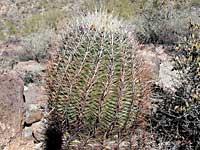Invasion of the sweetest plant of sweet nectars
2001/06/07 Elhuyar Zientzia
About a century ago, the Himalayan Impatiens glandulifera plant was brought to central Europe. During all these years it has managed to conquer more than half of the banks of the Czech Republic and now prepares the conquest of the rest of Europe and North America. According to a study by scientists from the Department of Zoology at the University of Würzburg, this exotic plant is much more successful than native plants. The strategy he uses to invade the surrounding territories is misleading for any confectioner.
The nectar produced by this glandulifera is not of any kind. It has much more sugar than the others and with this award attracts all the bees in the area. Consequently, the rest of the plants in this territory remain unpollinated and gradually lose strength. According to studies, approximately 48% of the nectar produced by Impatiens glandulife is sugar and each flower produces about 0.47 mg of sugar per hour. Keep in mind that plants generally produce less than 0.1 mg of sugar per hour and, in any case, never more than 0.3 mg per hour.
In addition to producing the sweetest nectar in the environment, Impatiens glandulife has another strategy. The main stem, with numerous branches, manages to monopolize the environment. In addition, it is the largest plant of all years in Europe (2 meters high) and can adapt to a variety of climates and lands. As the prize is great, the farthest bees also travel to the place where this plant is located, so competition between exotic and native plants is greater than previously thought.

Gai honi buruzko eduki gehiago
Elhuyarrek garatutako teknologia




